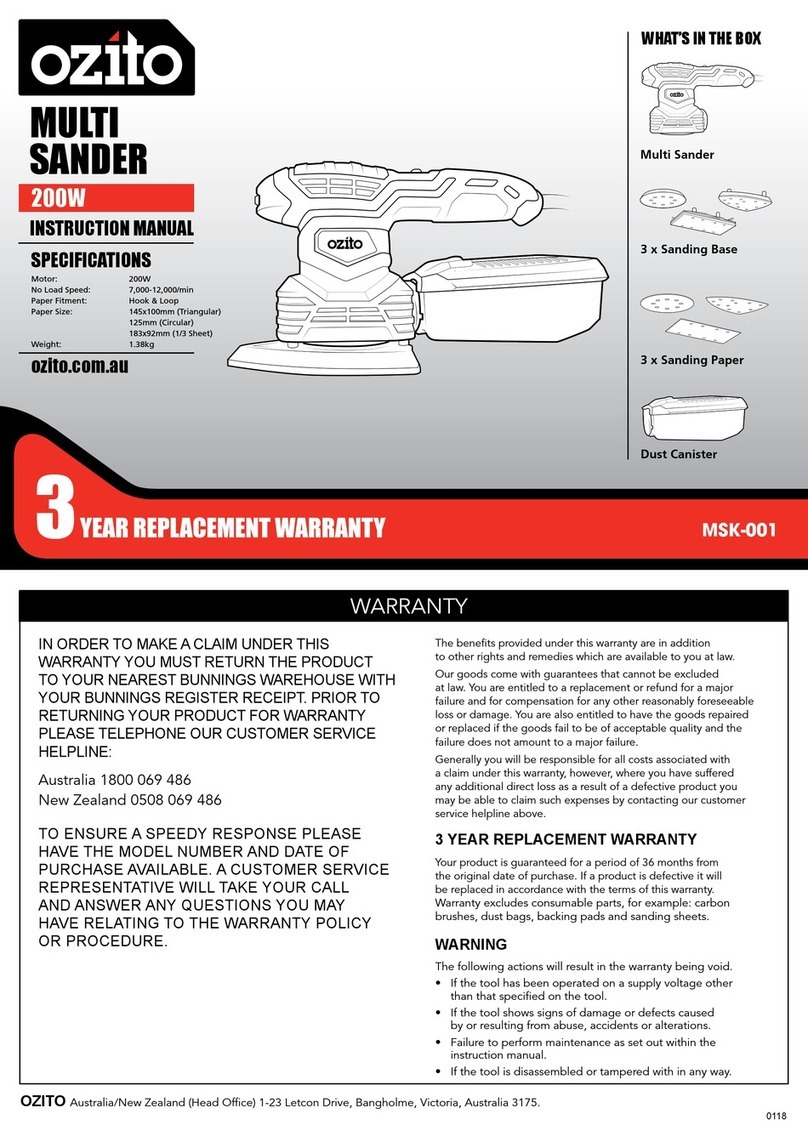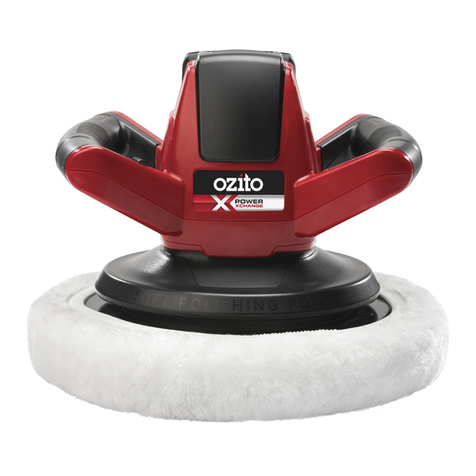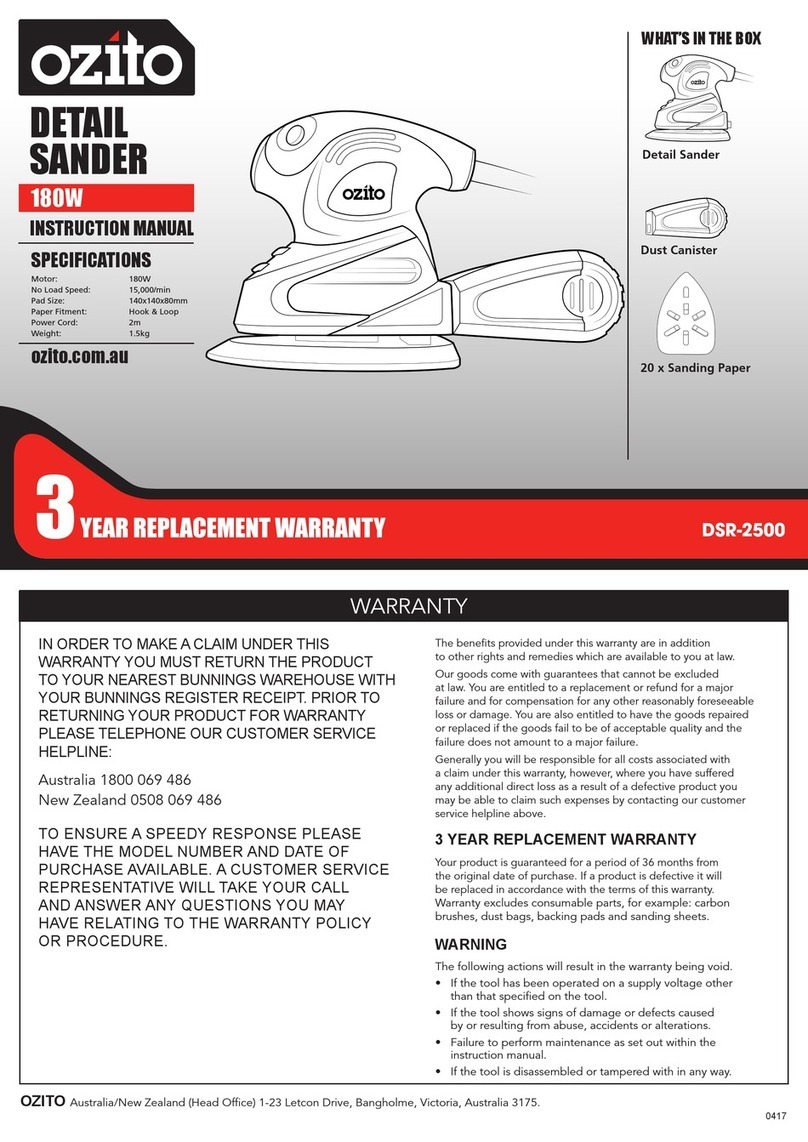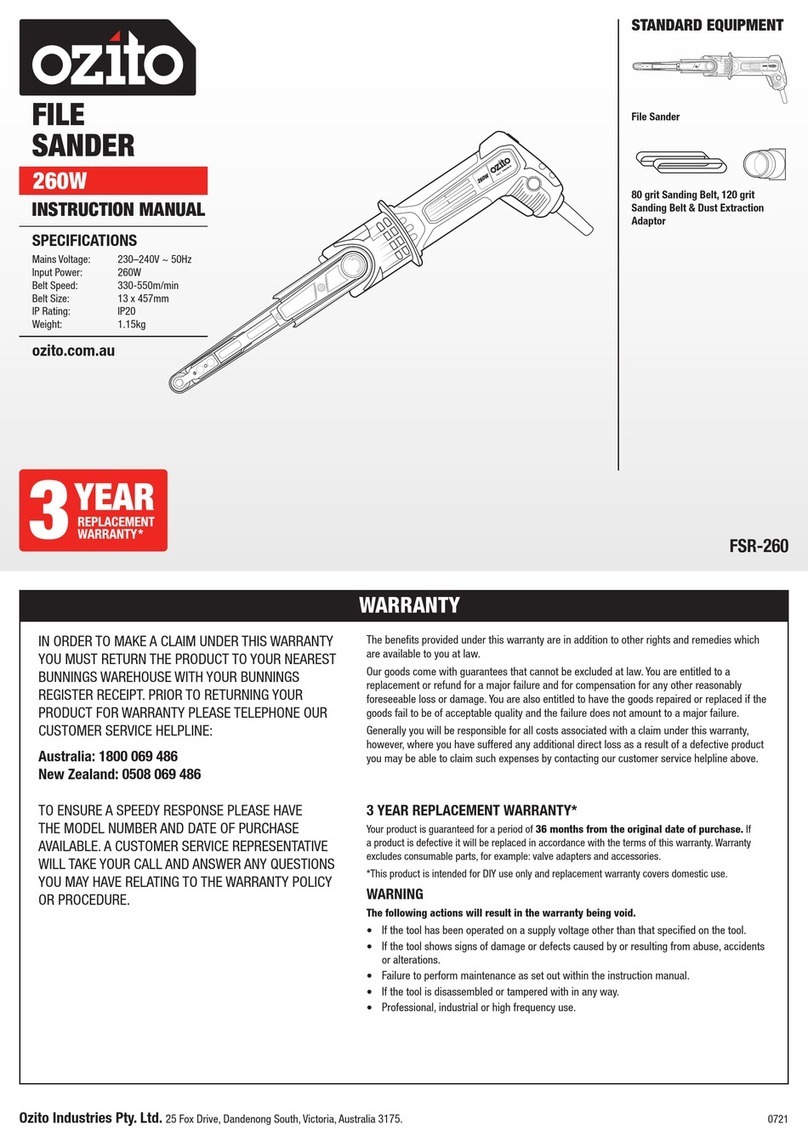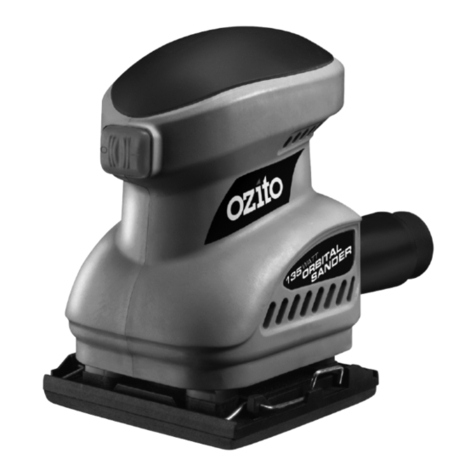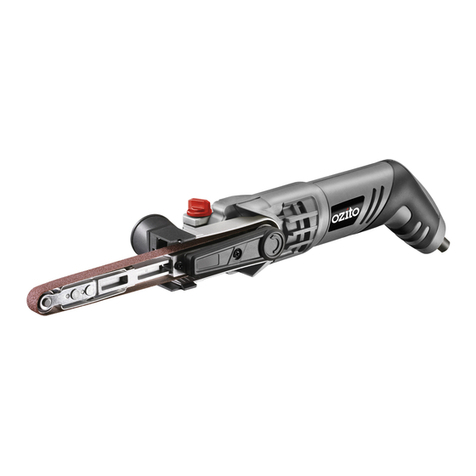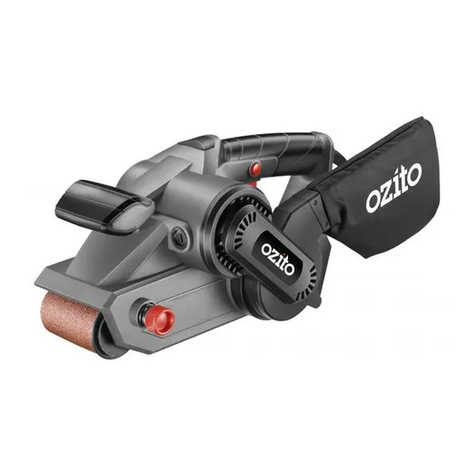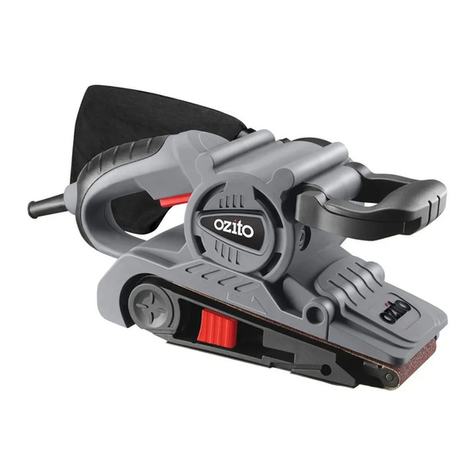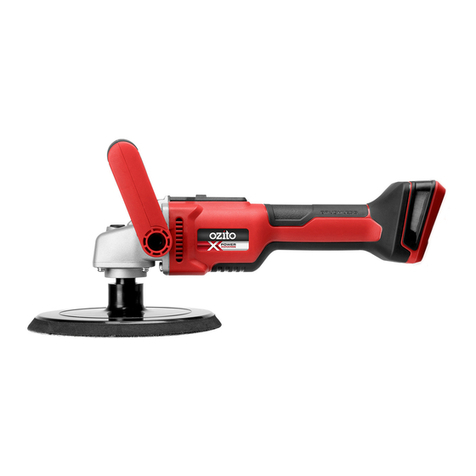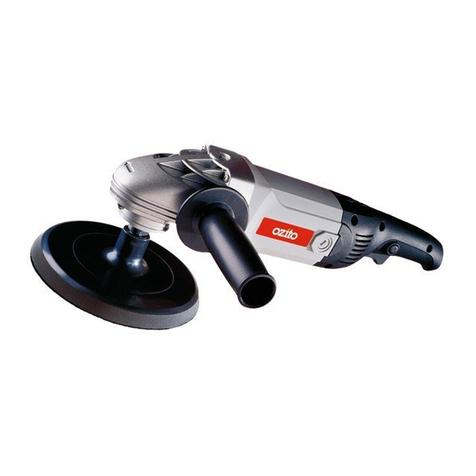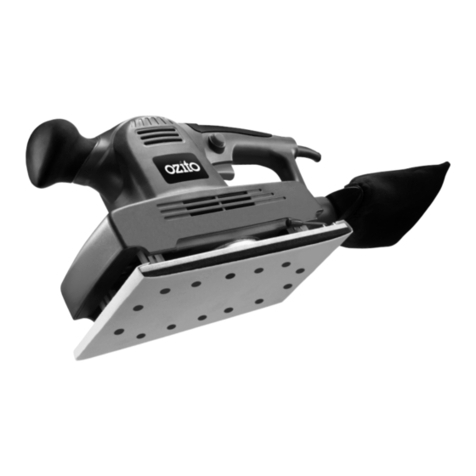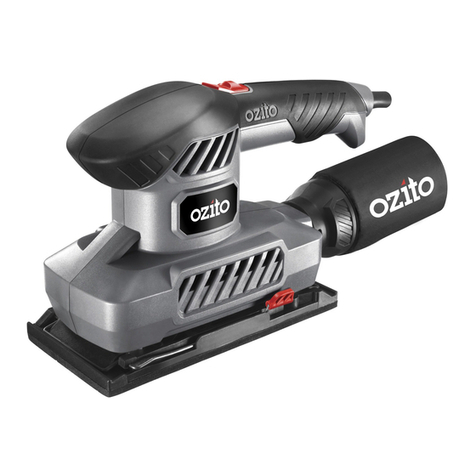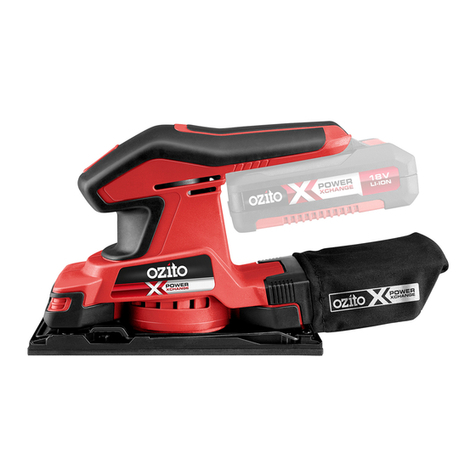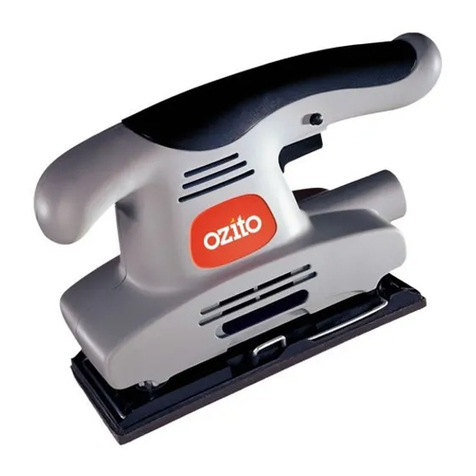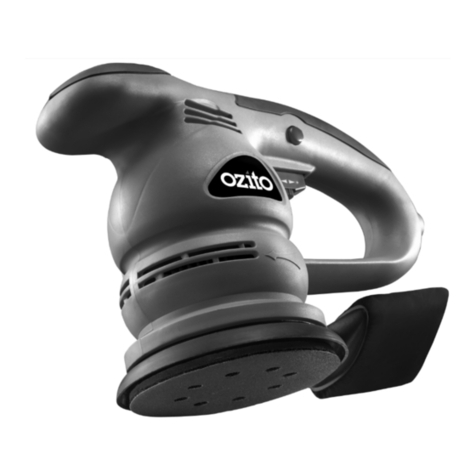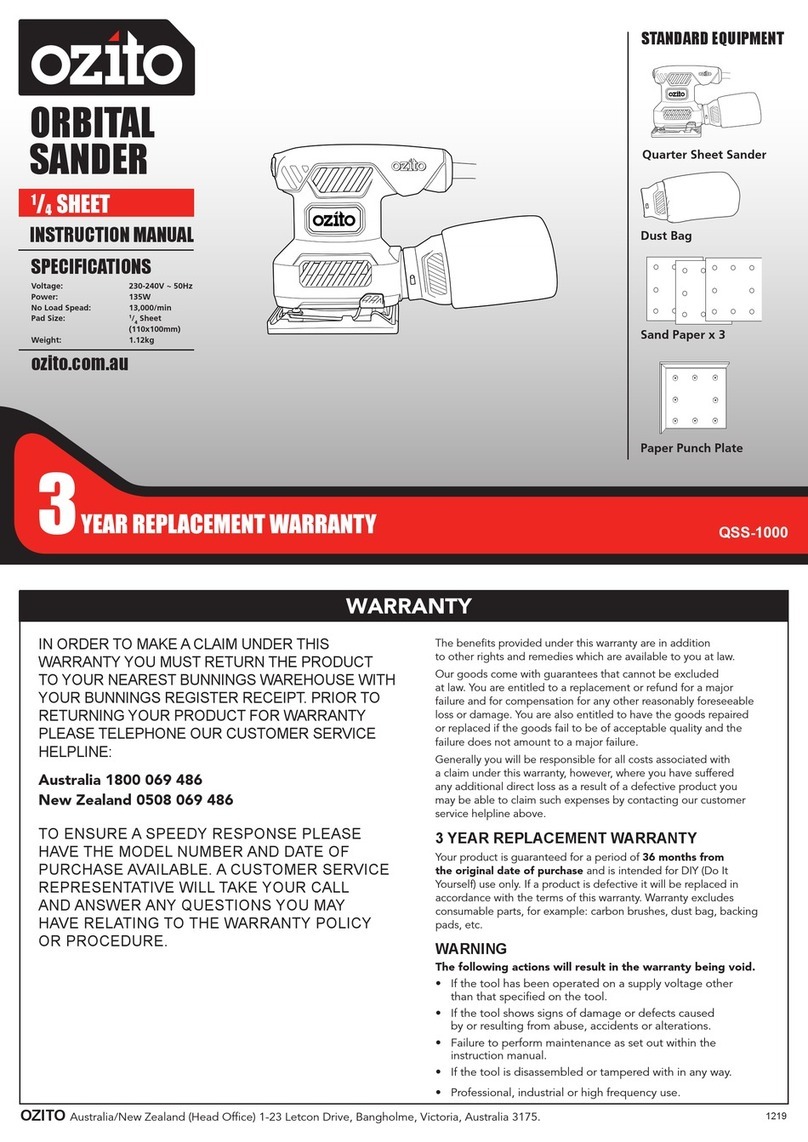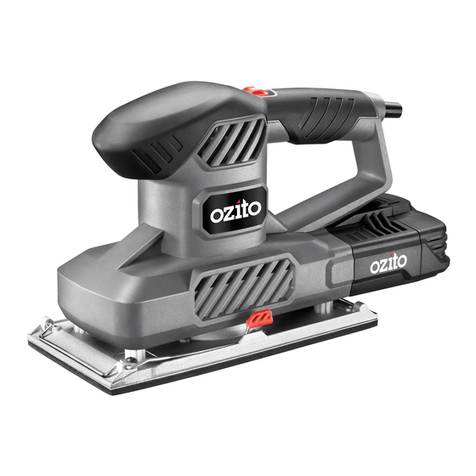Do not run the tool with pad removed. The resulting vibration could cause loss
of control.
Always unplug the sander cord from the mains before changing the sanding disc.
Danger! Lead based paints should only be removed by a professional. Do not
attach cutting discs or blades, this tool is not designed for such accessories.
Keep the work area well ventilated. Open the windows and put an exhaust fan
in one of them. Make sure the fan is moving air from inside to outside.
Remove or cover any carpets, rugs, furniture, clothing, cooking utensils and air
ducts. Furnishings should be removed or placed in the centre of the room and
covered. Work areas should be sealed off from the rest of the dwelling by sealing
doorways with drop sheets.
Empty the dust bag frequently and after the completion of sanding. Be
extremely careful of dust disposal, materials in fine particle form may be explosive.
Do not throw sanding dust on an open fire. Spontaneous combustion, may in time,
result from a mixture of oil or water with dust particles.
Always wear eye protection and a dust mask for dusty applications and
overhead sanding. Sanding particles can be absorbed by your eyes and inhaled
easily and may cause health complications.
Use special precautions when sanding chemically pressure treated timber,
paint that may be lead based or any other materials that may contain
carcinogens. A suitable breathing respirator and protective clothing must be worn
by all persons entering the work area.
Do not “wet sand” with this sander. Liquids entering the motor housing are an
electrical shock hazard.
Warning! Some dust created by power sanding, sawing, grinding, drilling and
other construction activities contain chemicals known to cause cancer, birth
defects or other reproductive harm.
Some examples of these chemicals are:
• Lead from lead-based paints;
• Crystalline silica from bricks, cement and other masonry products, and;
•Arsenic and chromium from chemically-treated timber.
The risk from these exposures varies, depending on how often you do this type of
work. To reduce your exposure to these chemicals; work in a well ventilated area,
and work with approved safety equipment, such as those dust masks that are
specifically designed to filter out microscopic particles.
Always wear eye protection and a dust mask for dusty applications and when
sanding overhead. Sanding particles can be absorbed by your eyes and inhaled
easily and may cause health complications.
Before attempting to use your sander be sure to familiarise yourself with all its
operating features and safety requirements.
SAFETY INSTRUCTIONS FOR RANDOM ORBITAL SANDERS
6
